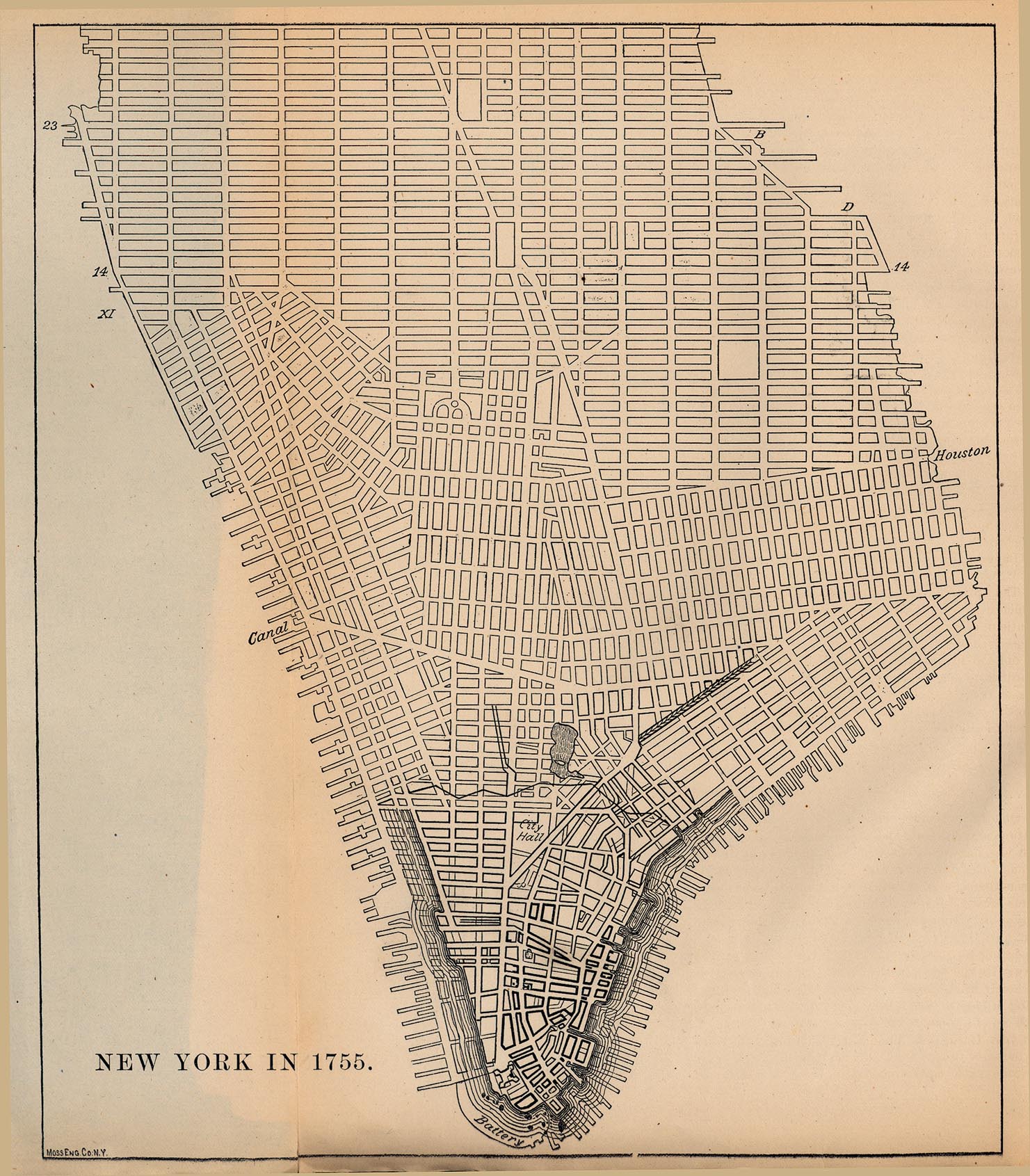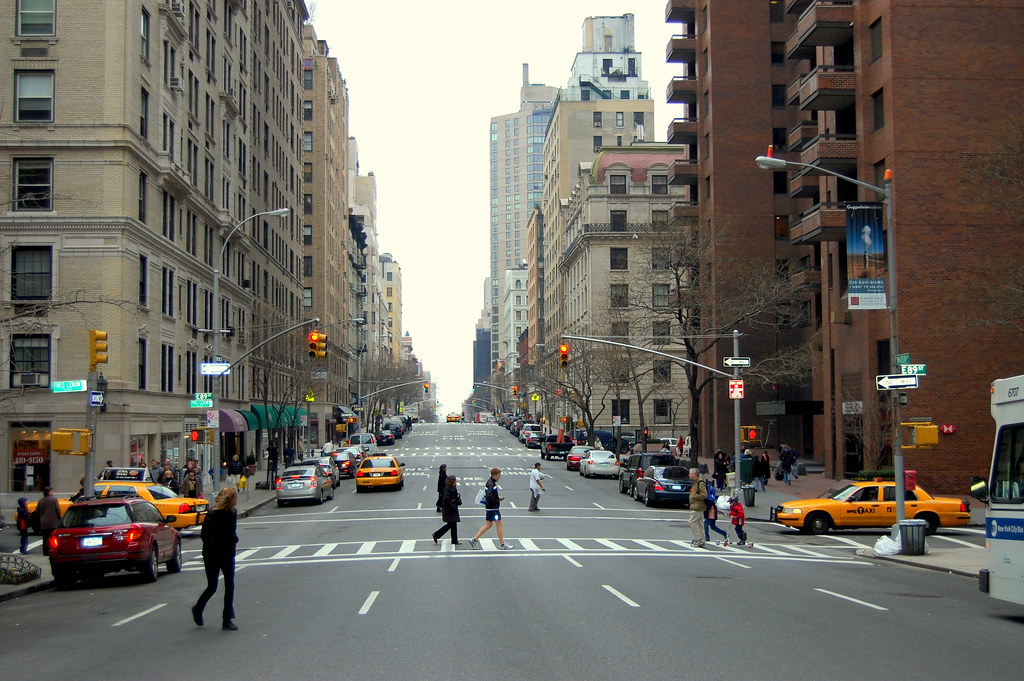Well, bringing Manhattan into the question brings up a very very complicated situation regarding Manhattan, and its grid's, walkability. In my firm opinion, the only reason gridded Manhattan is walkable is because it's so goddamn dense.
Manhattan's streets before 1811 were crooked, narrow, and disjointed; they were often made following Lenape foot paths or natural features. In 1807, real estate speculators convened to decide how to divvy up the rest of the island in a manner that was most efficient to the sale of land.
This map shows where the old streets of Manhattan plug into the new streets of the approved 1811 Commissioner's Plan streets near the top of the image: (the title 'NEW YORK IN 1755' refers to the blocks marked in bold at the tip of the island; the map was created much much later, at least 1860, as it shows the modern streetscape]
 lib.utexas.edu
lib.utexas.edu
One of the shortsighted decisions made in the creation of the Manhattan grid was regarding the size of blocks. In 1811, New York was not yet industrialized; the main areas of commerce and activity happened near the waterfront where ships docked and shared their goods. Responding to this condition, the Commissioner's planners decided to make blocks at the edge of the island smaller to accomodate a more pedestrian and commercial environment while they made blocks in the middle of the island wider to be conducive to small scale residential development.
Of course, this is not at all how Manhattan developed. Midtown would become home to the city's two grand rail terminals, and the area planned as a quiet suburb would become the city's largest commercial neighbourhood. And as water traffic died through the 19th and 20th centuries, the neighbourhoods at the waterfront became industrial and less populated areas.
In my firm opinion, walking in Manhattan above 14th st isn't enjoyable. The avenues facing narrow blocks are designed to accomodate traffic moving along the predominant North-South axis of the island and are very wide and noisy. As well, crossing the street becomes annoying because it happens too often; the blocks are too small. In the East-West direction, the streets are small and intimate, but they don't take you anywhere and are disconnected from the greater urban fabric.
This is the kind of streetscape that happens below 14th St:
 cyburbia.org
cyburbia.org
And this is the grid condition:
 Pedruca on flickr.com
Pedruca on flickr.com
[Notice how the blocks in the lower image are smaller than the blocks in the above...and yet which is the more appealing landscape for foot traffic?]
In short, block size is not necessarily the issue as it is implementation. Grid landscapes remove all the pleasureable surprises and discoveries a pedestrian can find in an older streetscape all for the name of navigational efficiency.



